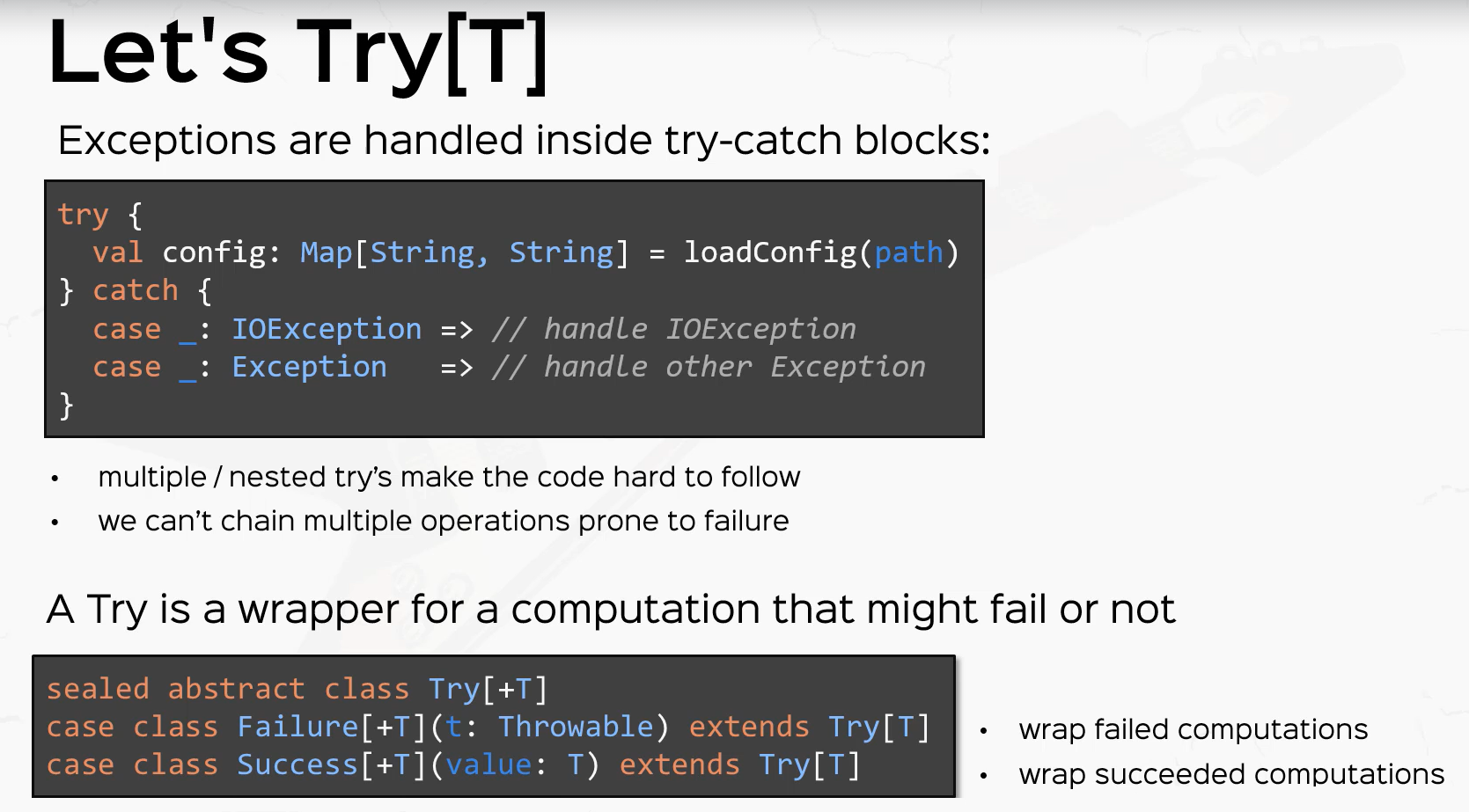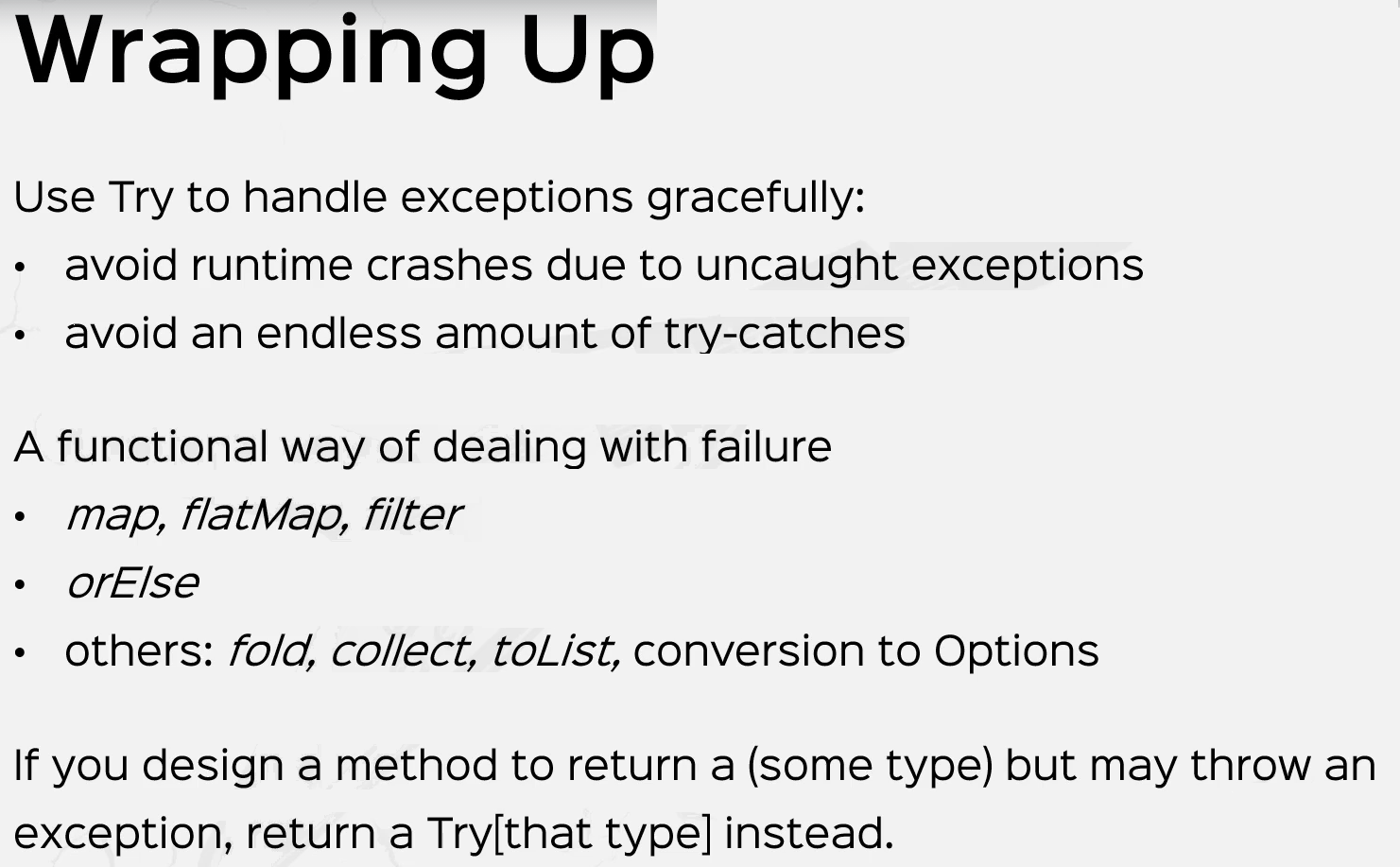ScalaSchool
Using Try, Success, and Failure
The Scala scala.util.Try as an approach similar to Option, but returns failure information rather
than a None.
The result of a computation wrapped in a Try will be one of its subclasses: Success or Failure.
If the computation succeeds, a Success instance is returned; if an exception was thrown, a Failure
will be returned, and the Failure will contain the exception which was thrown.

Example:
import scala.util.{Try, Success, Failure}
def divideXByY(x: Int, y: Int): Try[Int] = Try(x/y)
val result = divideXByY(1,0)
result match {
case Success(v) => println(s"The answer is v")
case Failure(e) => println(s"Error: ${e.getMessage}")
}
Since Try supports map, flatMap and filter you can do composition in the usual way:
import scala.util.{Try, Success, Failure}
val success1: Try[Int] = Success(10)
val success2: Try[Int] = Success(20)
val fail1: Try[Int] = Failure(new Exception("No Dice!"))
val r1 = for {
v1 <- success1
v2 <- success2
} yield v1 + v2
// r1 => type Try[Int] value Success(30)
val r2 = for {
v1 <- success1
v2 <- fail1
} yield v1 + v2
// r1 => type Try[Int] value Failure(new Exception("No Dice!"))
Try as a Collection
The scala.util.Try collection turns error handling into collection management. It
provides a mechanism to catch errors that occur in a given function parameter, returning
either the error, or the value returned by applying the function.
Scala provides the ability to raise errors by throwing exceptions, error types that may include a message, or a stack trace, or other information. Throwing an exception in your Scala code will disrupt the flow of your program and return control to the closet handler for that particular exception. Unhandled exceptions will terminate the application, although most Scala application frameworks and web containers take care to prevent this.
Throwing Exceptions
Exceptions may be thrown by your code, by library methods that you invoke, or by the Java Virtual Machine
(JVM). For example yhe JVM will throw a java.util.NoSuchElementException if you call None.get or
Nil.head (the head of an empty list), or a java.lang.NullPointerException if you access a field
or method of a nill value.
To throw an exception, use the throw keyword with a new Exception instance. The text message provided
to Exception is optional:
throw new Exception("No DB connection, exiting...")
Handling (catching) Exceptions
The complement to throwing exceptions is catching and handling them. Scala does support try {} .. catch blocks,
where the catch block contains a series of case statements that attempt to match the thrown error. I recommend
using the scala.util.Try() exclusively because it offers a safer, more expressive, and fully monadic
approach to handling errors.
Since Try and its subtypes are also monadiac collections, you can expect to find a number of thrilling and
yet familiar methods for error handling. You may find that selecting the right error handling approach (including
whether to handle them at all!) for your application will depend on the requirements and context.
